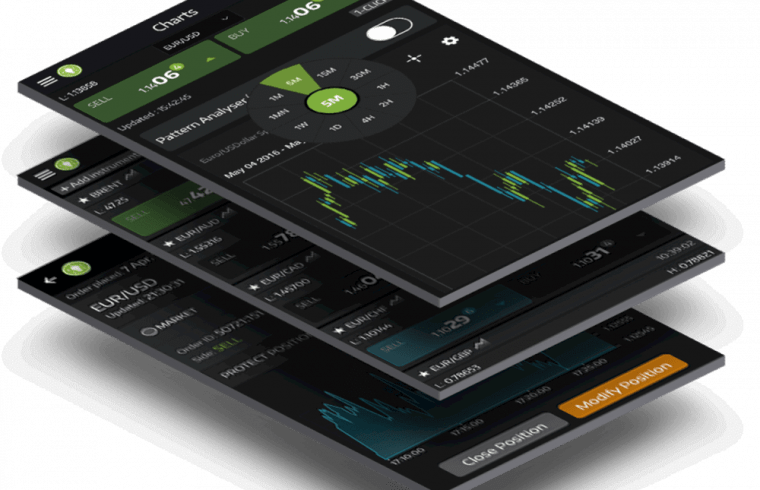Every broker faces a significant decision: Invest in third-party platforms or develop proprietary technology. Both options come with considerable downsides, leaving many firms searching for a viable alternative.
Third-party platforms provide quick and easy solutions for brokers, but they come with significant control issues. The lack of autonomy that comes with relying on external providers can be a major drawback. Companies dependent on third-party platforms often find themselves constrained by their service providers, restricting their ability to diversify and scale operations.
A common scenario is when service providers impose constraints that limit a brokerage’s ability to expand into new markets or offer additional services. This dependence can stifle growth and innovation, making it challenging for brokers to stay competitive in a dynamic market.
On the other hand, developing proprietary technology has traditionally been a route chosen by some established brokerages, positioning them as household names and top participants in different key markets, however as time has progressed, a number of smaller companies which have been in existence for less time have taken the initiative of investing in their own proprietary systems.
Companies such as IG Group, Saxo Bank, CMC Markets and Interactive Brokers are some examples of long-established companies that have built their own comprehensive trading environment, along with some looking to serve a specific niche such as Darwinex, however some brokerages that had initially entered the market using third party systems have more recently developed their own, a recent example being Pepperstone whose own in-house developed platform was unveiled in the latter part of last year.
Brokerages which have taken this initiative are able to smoothly integrate any third party tools or software. For firms such as this, having their own system gives them absolute control over every aspect of their business, however the resource and financial outlay in order to achieve this can be substantial, often requiring years of development and millions of dollars.
The third way: A hybrid approach
A hybrid solution combines the benefits of both third-party integrations and proprietary elements. This approach allows brokers to maintain control over critical parts of their infrastructure while leveraging external solutions where beneficial. Scalability and customization are key components of this model, enabling firms to adapt to market changes and customer demands effectively.
Taking this approach achieves a large amount of the control and flexibility which brokers that have developed their own infrastructure and trading systems now enjoy, but without the resource cost and length of time required as is the case with developing end to end trading systems in the way the aforementioned brokerages have.
In this scenario, a brokerage can choose a vendor-supplied fully comprehensive back end trading engine which has all of the functionality required for a broker to be able to scale and direct business under its own decision making process, have full control over asset classes, liquidity, connections to exchanges on which listed products are traded, and full ownership of all intellectual property.
Moreover, by taking this approach, a brokerage can choose such a back end trading engine from a specialist vendor and integrate any in-house front end trading system or third party dynamic tools, display all listed and OTC asset classes on one platform, and create differentiated services that engender commercial value, away from the also-rans which use a hosted service for their trading environment.
An interesting example of the practicalities of implementing a hybrid approach is that it facilitates the ability for a brokerage to be able to sub-license its software in a similar way that brokers which have their own systems are able.
By doing this, retail brokers can expand into the B2B sector by providing services to other brokers, effectively becoming providers themselves.
This strategy not only scales their business but also builds intellectual property.
Integrating with popular platforms like TradingView is a poignant example of this scenario. Such integrations enhance customer engagement and retention without the need to develop entirely new systems from scratch. These integrations can offer unique trading experiences, differentiating the broker’s services and improving client retention.
Liquidity-neutral systems allow brokers to access global markets without conflicts or constraints, supporting scalability and control. By operating without limitations imposed by third-party providers, brokers can better manage their growth and service offerings.
Insights from Andrew Saks at the LiquidityFinder Executive Club Event
At a recent LiquidityFinder event, industry expert Andrew Saks highlighted the limitations of both traditional methods and proposed a “third way” that offers a balanced solution.
“Companies dependent on third-party platforms often find themselves at the mercy of their service providers,” Saks noted, pointing out the risk of stifled growth and innovation. He also addressed the challenges of developing proprietary technology, stating, “Building your own systems is a long, expensive process.”
Saks proposed a hybrid model, combining third-party integrations with proprietary elements to maintain control and scalability. “Scalability and customization are key,” he argued, advocating for a balanced approach to platform development. He highlighted practical steps brokers can take, such as offering white-label solutions and integrating with popular platforms like TradingView. “White-labeling your product and offering it to other brokers can grow your business and intellectual property,” Saks explained. He also emphasized the importance of liquidity-neutral systems: “Access to all global markets via one platform on one account is crucial.”
The industry executive noted that recent industry shifts have highlighted the critical need for brokerages to possess autonomy over their trading infrastructure to effectively navigate market dynamics. “We’ve seen a lot of things happen, there’s been a move into different areas like prop trading, for example, that’s a big one, or the ability to take on board a b2b client base, give a comprehensive solution to a retail broker and become your own issuer of full solutions to brokerages and therefore grow your own business and grow your intellectual property. So, scalability in this industry, which is in the electronic business, can go in any direction..”
Andrew Saks highlighted the “three most important factors to look at right now that are burning issues”:
- to be able to access all global markets via one platform on one account via a liquidity-neutral system so that you have no conflicts and no constraints so any listed product or OTC product can be traded;
- scalability: investing in your own platform, so that you can actually build your own business and scale it as you wish and grow with the markets and with client demand and the way the market changes and the way the industry evolves without having to be either constrained or having to reinvent your system at a later stage;
- to be in control of your own business, where you grow your own brokerage your way. And any value and effort that’s put into it is your intellectual property, rather than growing the business of a service provider for somebody else who might turn around and curtail your ability to offer certain services.”
The event provided a platform for industry leaders to exchange insights and explore solutions to the pressing challenges confronting the trading sector. Saks’ address at LiquidityFinder’s ‘Executive Club’ event served as a catalyst for dialogue and strategic considerations among senior executives, reinforcing the importance of brokerages establishing their own trading platforms to ensure long-term resilience and competitiveness in the marketplace.












